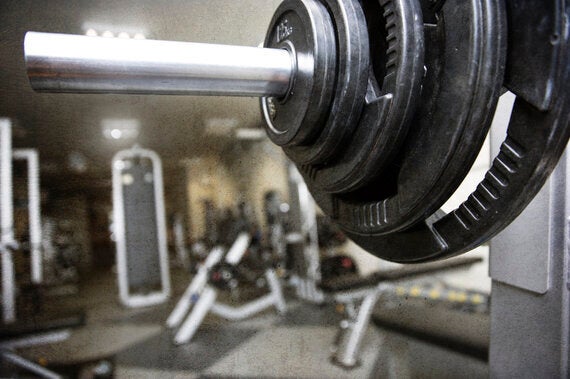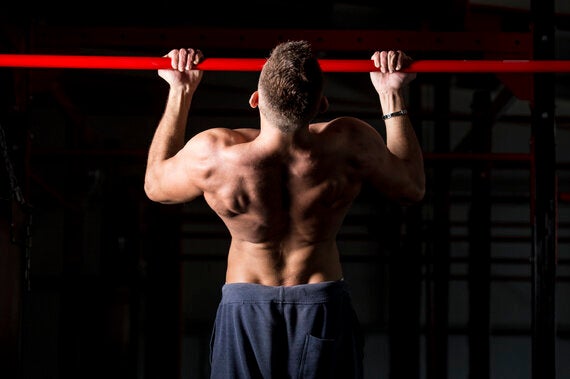Keeping to the current theme of exercises and exercising. The point everyone needs to remember is that an exercise only works properly, if it is executed correctly, safely and as intended. As such Form and Technique are everything.
In the clamour to lift as heavy a weight as possible, maintaining good technique often goes out of the window. But remember, heavier doesn't always mean better, especially at the expense of your form.
Not only does lifting with poor form dramatically increase your chances of injury, but it also stops the target muscles from working as effectively as they should be. As a result, you'll never get the muscle development you're after - no matter how heavy you lift.
Maintaining proper technique when exercising should always be your number one priority. You're in the gym to train your muscles, not your ego.
Here are 5 exercises that you're probably doing wrong, and how to fix them.
#1 - Barbell Back Squat
Despite being the most popular lower body exercise on the planet, the barbell back squat is also the one most commonly performed incorrectly. If squatting is causing you knee or lower back pain, there's a good chance that your form is off.
The first place to start with is your feet. Turn your toes out 30 degrees so they're not pointing dead straight. Be sure to keep your heels rooted firmly on the floor as you squat down and come back up again. Many people are naturally quad dominant, which means their heels lift off the floor as they come up out of their squat. Doing so prevents proper glute activation, which limits your overall power and can cause postural imbalances.
Next, make sure your hips are bending with your knees. When your hips don't bend correctly it puts excess pressure on your lower back. Squat with a natural arch like when you stand - rounding or excess arching of the back can cause serious spinal issues.
Finally, be sure to squeeze your abdominals tight to maintain proper centre of gravity and prevent excess spinal loading. Done correctly, a squat is one of the most effective abdominal exercises - although most people fail to engage their abdominals at all.
Depth is key here, so take your hips just below your knees before you come back up again. It's far better to have a greater range of motion with a lighter weight, than going too heavy with little depth. Anyone can rest a heavy barbell on their back.

#2 - Deadlift
The number one problem with most people's deadlift is the lack of proper glute activation. Your glutes are the biggest and most powerful muscle in your body, so unlocking their potential is the secret to increasing the weight on your big lifts. Most people do not activate their glutes enough when deadlifting, and end up putting extra pressure on their lower back and hamstrings.
To make sure your glutes are really firing as you deadlift, concentrate on driving your hips forward with every movement and contracting your glutes at the top of each rep. Keep your back straight and your glutes out to minimise spinal loading.
If your range of motion in your hips is not great, consider putting the bar on a raised platform to avoid reaching down so far. If the deadlift is causing you pain in your lower back, modify the movement to make sure you can do it safely.
Lastly, don't fall into the trap of max loading your deadlift too often to try and hit a 1RM. The deadlift is the most taxing exercise on your central nervous system, so going too heavy too often will impair your recovery and cause your other lifts to suffer. Instead, work in the 8 - 12 rep range with good form.
#3 - Overhead press
Notice a theme developing here? The bigger, more demanding lifts are the ones most commonly performed incorrectly. The overhead press often follows the same theme, causing shoulder pain in many people who execute it with poor form.
When preparing for the overhead press, your feet should be corkscrewed into the floor and your abdominals tight. Make sure you keep your rib cage down as the bar goes overhead. Most people let it lift upwards, which puts unnecessary weight on the lower back.
You should also be lifting with a thumbless grip - which means having your thumbs on the same side of the bar as your fingers. This allows for a more natural pressing path whilst also minimising the stress on your wrists.
Squeezing your glutes together on every repetition will also help protect your lower back and increase the force behind the bar.
Finally, don't lock your elbows at the top of each rep and let the bar come back down like a bag of cement. The bar should move explosively on the way up, but the descent of the bar should be smooth and controlled.
#4 Pull ups
It's easy to get sloppy with pull ups. Whilst a conventional barbell or dumbbell lift has a limited range of motion, bodyweight exercises such as the pull up require full body control. It's something a lot of people lack, which is why most people flail around like a fish out of water when trying to do a pull up.
Sorry crossfitters, but kipping (swinging beneath the bar to allow your momentum to help you get your chin above the bar) does not equal a pull up. Your back should be straight, your abdominals engaged, and the motion should be controlled throughout.
When you get onto the bar, pull your shoulders down into their sockets to ensure the stress is placed onto the muscles and not the joints. Do not start in the dead hand position with your shoulders up by your ears.
Your chin needs to clear the bar on every rep. Most people only pull themselves to eye level, which is an incomplete repetition.
If you can do 12 - 15 pull ups with solid form, you're doing better than 95% of guys in the gym. If you want to progress to a really elite level, start adding weight when 'regular' pull ups get too easy.

#5 - Dumbbell row
The dumbbell row is a straight forward exercise and one of the best for developing the lats - when done correctly. But far too many people engage the biceps too readily, thus taking the stress away from the lats and rendering the whole exercise virtually useless.
Hit your biceps with curls and chin ups. Dumbbell rows should focus on targeting the lats, which are underdeveloped in many people.
To execute the dumbbell row correctly, you're probably going to need to lighten the load by as much as 20 - 30%. As you contract, focus on really squeezing your shoulder blade backwards to engage your back muscles. The movement should be slow and controlled: 2 seconds up, 2 seconds down. Don't blast your way through reps, as this will just stress out your shoulders and elbows.
Remember, form comes first with all exercises! Make sure you are doing them correctly to get the results you want from your training.